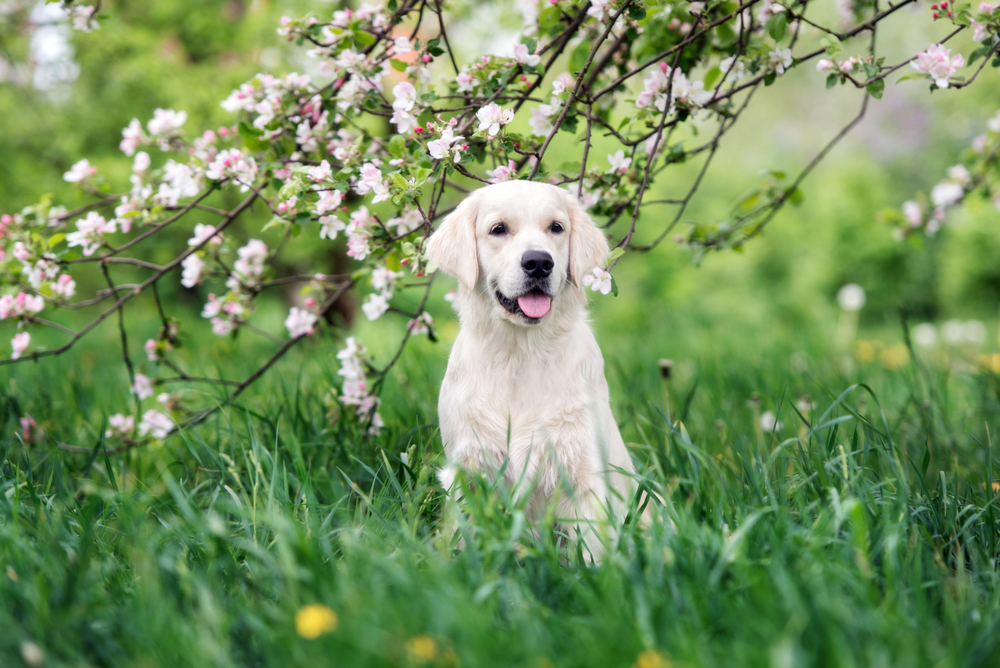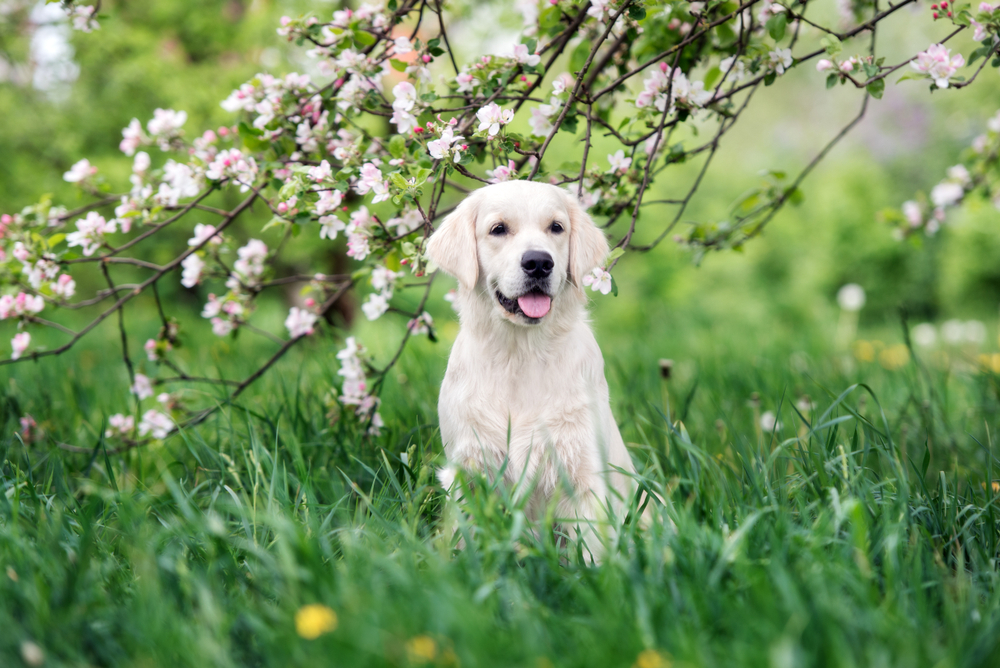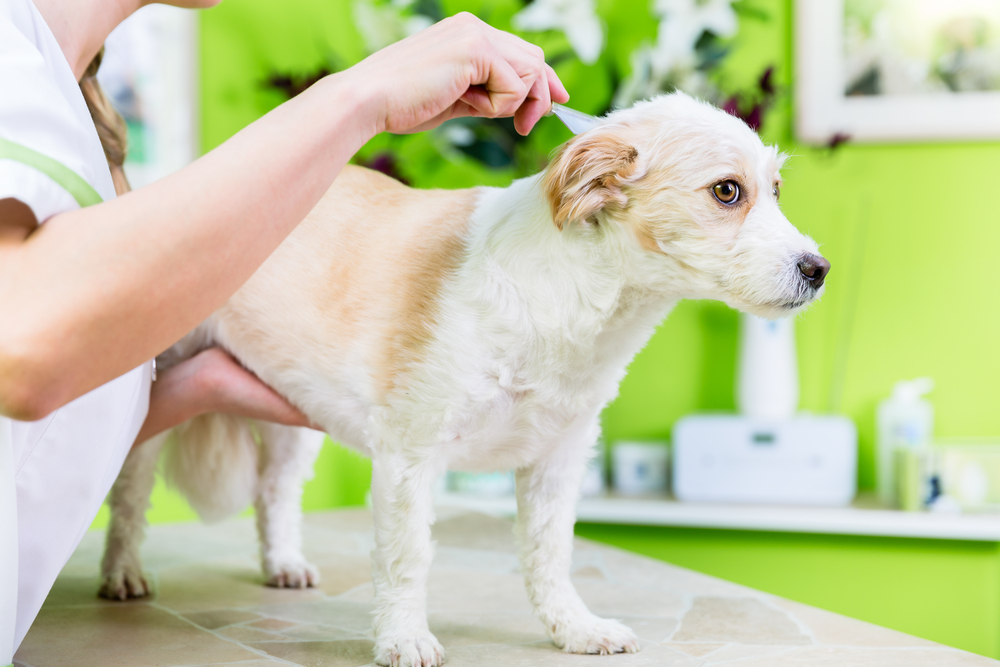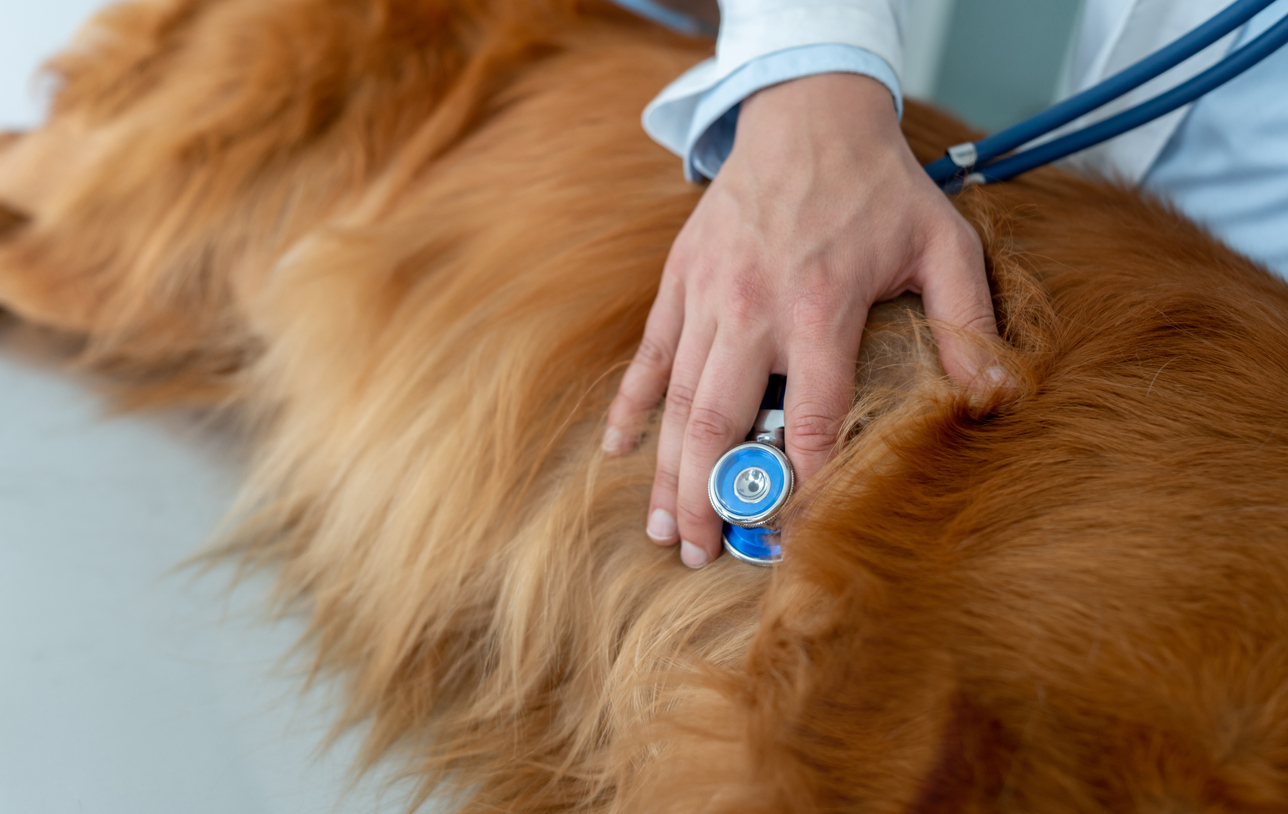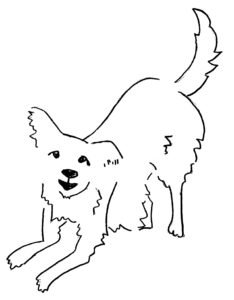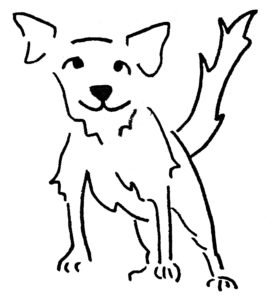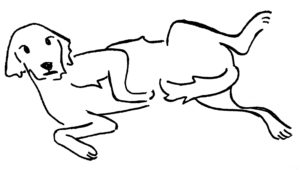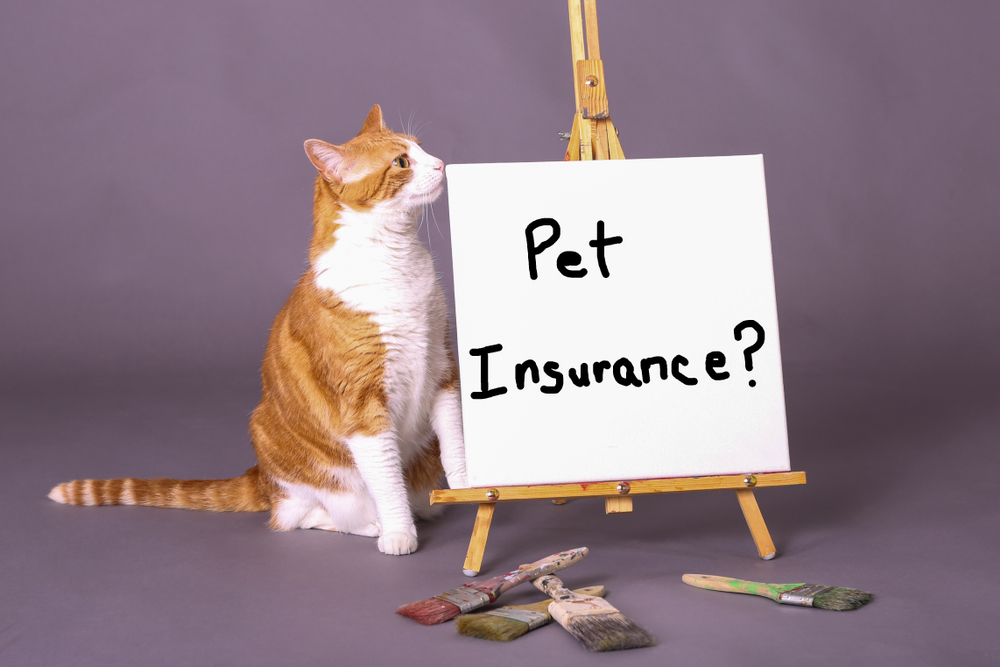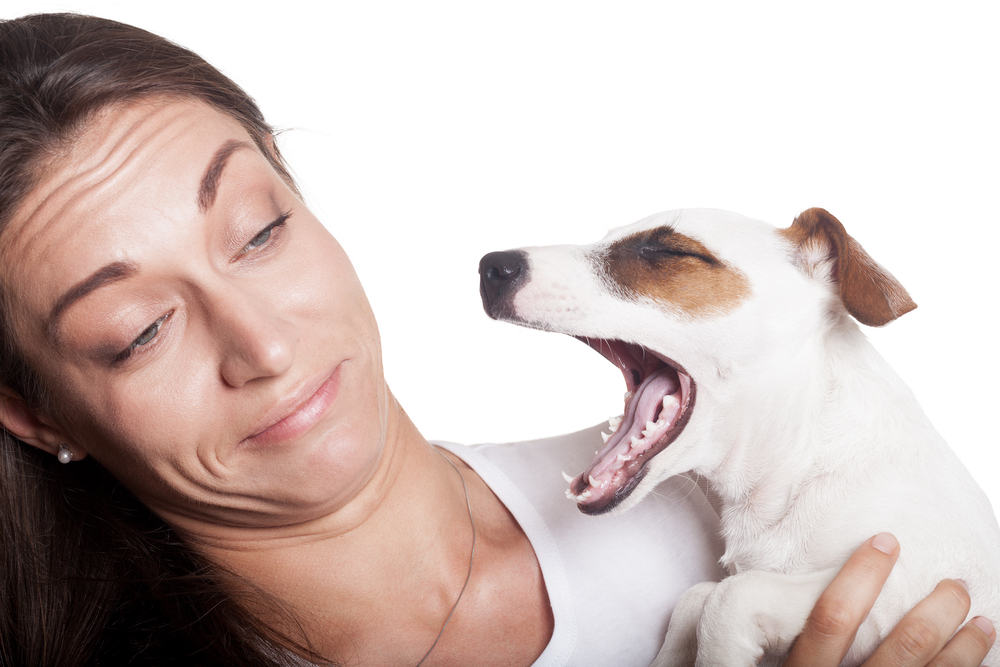A big part of owning a dog is learning how to speak their language. You know that a tap on the door means they need to be let out, and a light bark at the treat jar means they think they deserve a reward (probably for being so smart). But what does it mean when your pup is excessively itching and biting at their skin, licking their paws and shaking their head?
These are common signs of dog allergies.
Allergies are an abnormal excessive response by the immune system to pollens, food proteins, flea saliva, molds or house dust and storage mites. So if you’re asking, “can dogs have allergies?” the answer is yes. In fact, just like humans, dogs can even inherit their allergies from their parents.
So what do I do if my dog has allergies?
In this post, we’ll discuss how your veterinarian treats common allergies in dogs and how to diagnose the cause of your precious pup’s symptoms. While canine allergies are not curable, there are steps you can take to manage your dog’s symptoms so that they can get back to what’s really important—using those puppy eyes to get more treats from you.
Diagnosing Allergies in Dogs
Unlike humans, most dogs will not experience sneezing and coughing due to allergies. Instead, their skin is usually affected.
That’s why common symptoms of dog skin allergies include:
- Itchy skin
- Rashes
- Ear problems and infections
- Foot licking
- Anal gland problems
- Hives
If your pup is exhibiting any of these symptoms, you should take them to your vet for an accurate diagnosis of the cause of their symptoms.
Allergies or a Skin Infection?
If your precious pup is extremely itchy, their excessive scratching and licking may lead to hair loss, bumps, red spots and flaky skin. However, allergies aren’t always the culprit for these symptoms. To determine whether your dog’s itchiness and hair loss are due to a skin infection, your veterinarian will perform a skin scrape and cytology. While these procedures might sound intimidating, don’t worry—they’re quick, non-invasive and relatively painless for your furry friend.
Your vet will take into account the changes noted on your dog’s physical exam, along with the results of these (and possibly other) tests. You may be sent home with pills and/or topical medications to provide relief for your dog. Sometimes, medicated shampoos are also prescribed to help speed up your dog’s recovery.
How to Treat Dog Allergy Symptoms
Now, you’re probably wondering how to treat dog allergies? Your veterinarian may recommend several medications to alleviate your pup’s painful symptoms. Depending on your dog’s unique situation, some of these medications may be used in combination with each other.
Since an allergy flare-up often will cause a skin infection due to yeast or bacteria, your veterinarian will first treat any infection that is identified on the skin cytology and/or skin scrape test. As long as the infection is present, your pup will continue to feel itchy and continue to itch/scratch/lick the uncomfortable area—prolonging the time it takes to get them healthy again!
Treating skin infections can involve oral medications (like antibiotics or antifungal medications), topical treatments that you apply directly on the skin (such as a medicated “foam,” mousse, or ointment), medicated shampoos—or even all three at the same time. Treatment of skin infections can last up to six or eight weeks, so it’s important to follow up with your veterinarian’s recommended recheck appointments and to finish all prescriptions as directed.
Sometimes topical products, such as a medicated shampoo, will also be used for long-term control of allergy symptoms. Prescription-strength shampoos are designed to be used frequently, unlike over-the-counter options, which can dry out your dog’s skin if used too often.
When you frequently bathe your dog using a medicated shampoo, the amount of yeast and bacteria on the surface of your dog’s skin is reduced. This means fewer irritating microbes are able to make their way through the “holes in the cement” of your dog’s natural skin barrier (see our blog post on “Can Dogs Have Allergies?” for more on this concept!). You can begin to see how important it is for some dogs with allergies to receive frequent medicated baths!
The second step in treating your dog’s allergies is to stop the itch! Not only does this help your dog feel better right away, but stopping the itch means stopping the damage your dog is doing to their skin barrier by licking, scratching or chewing. Overall, this leads to faster healing—and more comfort for your pup!
Many pet owners ask about using antihistamines for their dogs. While your veterinarian may recommend these medications for mild cases of itchiness, they are often not sufficient to give relief during a significant allergy flare-up. Instead, your veterinarian will likely turn to prescription medications.
Some commonly prescribed medications include:
- Flea Prevention—Why in the world are we talking about fleas? Well, because flea allergy is far and away the most common allergy in dogs! For this reason, veterinarians typically recommend year-round prescription-strength flea control in ANY dog with repeated skin infections and allergies. Some prescription flea preventatives need to be given once a month, and some last for up to three months at a time. Ask your veterinarian which choices are most effective for your local area.
- Oclacitinib or Apoquel® – This versatile, highly-effective medication is used in many cases of dog allergies. It works by stopping the chain reaction that occurs when a dog is exposed to an allergen—directly reducing the pathway towards inflammation and itchiness, as well as relieving the sensation of itch.
During an allergy flare-up or itchy skin infection, your veterinarian may prescribe Apoquel twice daily to control your dog’s itch or to resolve a skin/ear infection more quickly. In dogs with chronic allergies and frequent flare-ups, it can be used once a day as needed—during your dog’s itchy season (if they suffer from environmental allergies), during a flare-up, or—for dogs with severe allergies—all year round.
While side effects are very rare, they can include an upset stomach (vomiting or diarrhea), and your veterinarian may want to monitor your pup’s bloodwork if they are on it for months at a time. Apoquel is for use in dogs one year of age and older and is not intended to be used in dogs who have been diagnosed with cancer.
- Cytopoint® – We’ve all had plenty of experiences with dogs who refuse to take pills—and for those pets, Cytopoint is a great option! Cytopoint is an injection administered by your veterinarian under the skin (just like a vaccine). This “allergy shot” works by blocking the sensation of itchiness from reaching your dog’s brain. What does this mean? Less licking, scratching, chewing and scooting!
Its anti-itch effects last an average of four weeks, but in some lucky dogs, it can last up to two months. This means effectively breaking the itch cycle. In some dogs, this medication can start working in as little as 24 hours. Many dogs will receive this injection every 4 weeks during their allergy season or during a bad allergy flare-up. Few side effects have been reported, and it is safe for dogs of all ages.
- Corticosteroids – This type of medication is used in patients who have a significant amount of swelling, inflammation or pain associated with their allergy symptoms. Steroids remain the quickest way to relieve the symptoms associated with severe allergies, but they are not used for long-term control due to their side effects. Each patient is different, but many times, pups will have increased thirst, urination, appetite and panting while on steroids. With long-term use, problems with the liver and joints can occur, too.
However, this type of medication is less expensive than Apoquel and Cytopoint, so it remains a good choice for short-term use in those patients for whom the more expensive options are cost-prohibitive. Most dogs usually need a tapering dosage, so always ask your veterinarian before discontinuing any type of medication.
- Atopica® (cyclosporine)– This medication is more of a long-term solution to your pup’s allergy problems. It works by targeting a very specific portion of the immune system that is responsible for your dog’s allergies and takes about four weeks to take effect once you start giving it to your pup daily. It is often prescribed in conjunction with some of the shorter-acting allergy medications (such as Cytopoint) to give your dog relief until Atopica can start being effective. Atopica can cause vomiting, diarrhea and loss of appetite. Your veterinarian may recommend monitoring your dog’s bloodwork while on this medication to make sure there are no effects on your dog’s liver or kidneys.
- Fatty Acid Supplements—While not very helpful in the midst of a severe allergy flare, fatty acid supplements can help your dog’s allergies if used daily for a long period of time. These fatty acids seal up the “cracks” in your dog’s skin barrier from the inside—creating a more healthy skin surface and minimizing the chance that allergens and microbes sneak beneath the surface of the skin! This leads to less inflammation and less severe episodes of itching and skin infections when your dog is exposed to an allergen. Your veterinarian can provide the most well-tested and specific fatty acid supplements designed for dogs. Sometimes, your veterinarian may recommend that fatty acids are provided by a prescription dog food specifically formulated and tested to maximize the health of your dog’s skin.
How Can Allergies Be Cured?
Of all the available allergy treatment methods, immunotherapy is the only treatment that can actually CURE your dog’s allergies. Immunotherapy is started AFTER performing allergy testing (see below), and a vaccine is formulated specifically for your dog—and ONLY your dog! By exposing your dog to tiny amounts of their allergens over time and slowly increasing their dosage, immunotherapy trains your dog’s immune system to NOT react to these allergens when they are encountered in your dog’s daily life. Immunotherapy is successful in about 70-80% of patients, and it takes a year of treatment to determine whether your pup will be one of those lucky dogs. You should be prepared for this financial and time commitment before pursuing this option with your veterinarian.
Immunotherapy can either be given orally or by injection. Since the treatment works by exposing your dog to the allergen, your pup may experience a reaction to the vaccine during the process—but this is usually temporary and easily treated. Some dogs can actually stop immunotherapy treatment after 2-3 years because their symptoms have abated.
If your veterinarian suspects your dog’s allergies may benefit from immunotherapy, they’ll need to figure out exactly which allergens your pet is allergic to.
This is done in one of two ways:
- Intradermal skin testing – For this allergy test, your dog will be given a sedative, and the hair on their side and abdomen will be shaved. A veterinary dermatologist will then inject small amounts of different allergens under your dog’s skin and monitor the response (such as raised welts in the spot of the injections). This test is considered the “gold standard” of allergy testing. It usually requires referral to a veterinary dermatologist, since very few general practitioner veterinarians have the equipment and training to administer this test. Intradermal skin testing is the most accurate way to test for environmental allergens.
- Serum allergy testing – This test is less invasive than intradermal skin testing, since it requires only a simple blood draw that any veterinarian can do. Your dog’s blood is analyzed by a special laboratory, and their individual allergens are identified. It is highly accurate but can occasionally miss a few of your dog’s specific allergies.
Once these tests are performed, your vet will be able to recommend the best allergen-specific immunotherapy for your dog, order a vaccine formulated specifically for your pup and discuss a schedule with you to provide the immunizations.
How to Prevent and Minimize Your Dog’s Allergy Flare-Ups:
In addition to any allergy treatments recommended by your veterinarian, there is a lot that YOU can do as a pet owner to help your allergic pup! These strategies can reduce how frequently your dog’s flare-ups occur and how severe they become.
Sometimes, the best way to treat allergies in dogs is to avoid the offending allergens altogether.
Keeping allergens away from your pup is easy if you do the following:
- Use human house dust mite preventatives on mattresses and pillows
- Wash dog bedding once a week
- Wash dog food bowls in hot water
- Keep grains, pasta, and pet food in their original packaging in an airtight container
- Limit your dog’s outside exposure when pollen counts are high
- Limit exposure after grass is mowed (as this kicks up pollen)
- Change your clothing and shoes after mowing
- Wipe your dog’s paws with a wet washcloth when they come inside, or rinse their feet and pat dry
- Bathe your dog often, following it with a cool water rinse. Let them air dry, or pat them down with a towel. (Do not use a hairdryer. Avoid aggressively rubbing your dog during and after the bath.) Note: your veterinarian may recommend a specific prescription shampoo and bathing frequency to help your pup.
- Make sure your dog is up to date on prescription-strength flea prevention to prevent exposure to flea saliva
Treat the Allergies to Treat Your Dog
Dog allergies are nothing to sneeze at. They can be incredibly uncomfortable for your furry friend. If you notice excessive itching, licking, biting or head shaking, it may mean your dog is trying to tell you—help; I have allergies!
Properly diagnosing your dog’s allergies is the first step to providing them some much-needed relief. With avoidance and vet-prescribed treatment geared to your dog’s individual needs, you can effectively manage their symptoms. This means they can get back to cuddling, playing, exploring and of course, begging for those well-deserved treats.
If you have any questions or concerns about your pup’s allergies, chat with one of the vets from AskVet today! We’re here 24/7 for all your puppy needs to help your pup live a long, healthy, allergy-free life.
Written by:
Allison Ward, DVM
Dr. Allison Ward grew up in the suburbs of Washington, D.C. and started working in veterinary hospitals when she was 14 years old. After graduating from veterinary school in 2011, she completed a small animal rotating internship in New Jersey, followed by a neurology/neurosurgery internship in Miami. After completing this advanced training, Dr. Ward then moved on to general small animal practice. Dr. Ward’s professional interests include feline medicine, neurology, and pain management. Her passion for educating pet owners carries over into her work with AskVet, and she loves being able to help pets and their parents at all times of the day (and night!). She currently resides in sunny south Florida with her two cats, Larry and George.

